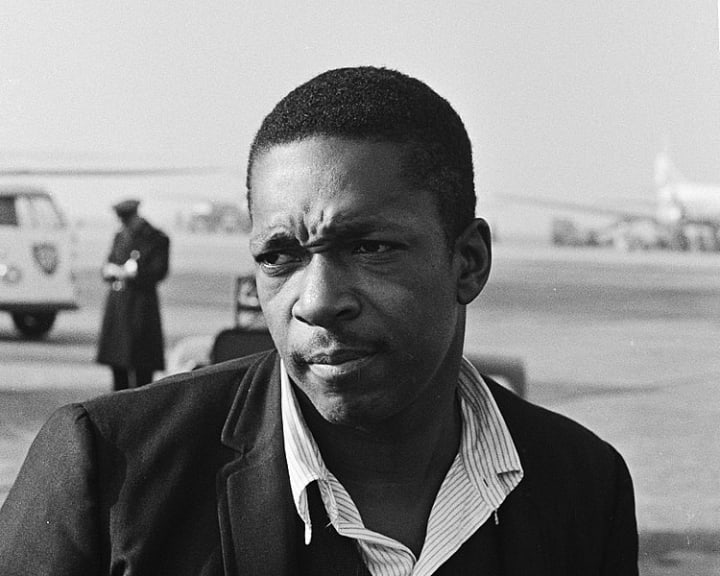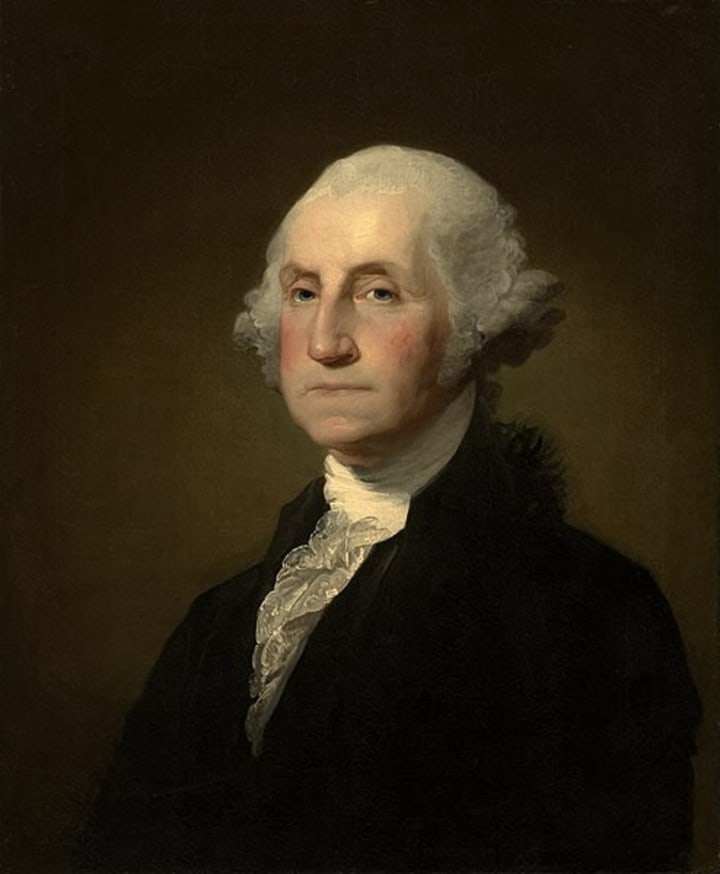
When most of us think of God, we picture some sort of omniscient, omnipotent presence that lives far from the mortal plane and in a realm beyond human understanding.
Even those divine figures whom we believed to have walked the Earth at some point are often so far removed from modern documentation that tales of their existences and deeds are more a matter of faith than fact.
However, throughout the course of history, there have been a number of living, breathing humans whom many of us have seen with our own eyes, being worshipped as deities. Unlike the divine figures worshipped in various mainstream religions, most of the historical figures on this list are people who have been alive at either the same time as you or somebody you know.
Let us take a look at these modern figures from history who are worshipped as Gods and the reasons why they have been elevated to such a sacred position.
Disclaimer: This list will not look at people who proclaim themselves to be God but rather five historical figures who are worshipped without ever having made a claim to Godhood. Without further ado, let’s begin!
#5. Mother Teresa

Arguably the most well-known Roman Catholic Nun in history, Mother Teresa was born in 1910 and died in 1997. Born in Albania as Anjezë Gonxhe Bojaxhiu, the future Mother Teresa would take her vows in 1937 before finding her calling, helping the poor and sick in Calcutta, India 11 years later
Mother Teresa’s efforts to help India’s poor earned her widespread acclaim which she later used to expand her congregation’s work all across the world. Giving food, medical attention and a dignified death to the poorest and sickest people, Mother Teresa is often seen as a symbol of humanitarianism and is a beloved figure among people of various religions.
While she was canonized as a Saint in 2016 by the Roman Catholic Church whom she devoted her life to serving, there are many in her adopted home of Calcutta who have been worshipping her as a Hindu Goddess ever since her death. Although a Catholic Nun herself, many of those who were helped by Mother Teresa were not compelled to change their faiths. In fact, when she was able, Mother Teresa would even arrange for a sick person to be given their last rites in accordance with their own religion.\
Her legacy continues to be felt in Calcutta today thanks to the work of her congregation, the Missionaries of Charity. Many of her worshippers, who have met her in person, continue to pray to her as if she were a Hindu deity. Even 25 years after her death, many in Calcutta believe that Mother Teresa continues to watch over them and aid those that are struggling the most.
#4. John Coltrane

Born in 1926 and passing away in 1967, John Coltrane is the only person on this list to not be a religious figure or world leader. Instead, Coltrane was a legendary Jazz musician who became one of the innovators of the Free Jazz genre. With contemporaries like Miles Davis and Thelonius Monk amongst others, Coltrane’s skills stood in a class on their own.
A former soldier, Coltrane fell into music during his time in the Navy. As his success grew, he soon fell into the decadence that came with a life of fame and fortune. However, in 1957, Coltrane claimed to have had a spiritual awakening which allowed him to kick his drug addiction and alcoholism in order to live a healthier, more fulfilling life.
Following his awakening and rediscovery of God, Coltrane was no longer committed to a particular faith as he began to believe in all religions. Following this, his music took an even more spiritual tone and began to affect his listeners in unexpected ways. Many of his fans began to feel intense euphoria or some kind of spiritual experience when listening to his songs and following his death, many believed that Coltrane had ascended into a higher plane.
The year after Coltrane’s death, he began to be worshipped in a congregation known as the Yardbird Temple (named after fellow musician Charlie “Yardbird” Parker). Their devotion to him was so strong that his songs were used as hymns and prayers. When the congregation joined the African Orthodox Church, Coltrane was demoted from God to Patron Saint. However, his divine legacy lives on through the St. John Coltrane African Orthodox Church where his songs continue to be used in worship service and prayers.
#3. George Washington

Born in 1732 and passing away in 1799, George Washington is the only person on this list whom nobody today can say they were alive at the same time as. Despite this, the existence and exploits of America’s first President are well documented facts which cannot be disputed by those who believe differently.
Due to his reputation as the first President of the US, many in the country place Washington on a very high pedestal. Throughout the country, various landmarks and monuments are made in his honor or image while the nation’s Capital, Washington DC, is aptly named after the man in question. Most notably, a painting in the Capitol Building titled The Apotheosis of Washington, portrays America’s first President as a divine figure who is watching over the country he helped establish.
Despite the continued veneration, most Americans do not see George Washington as a God or anything remotely resembling something divine. While he is indeed a respected leader, most people do not worship him. Washington himself was never seen as an exceptionally devout man nor did he have any aspirations to be treated as a God.
However, in Hawaii, there are a number of people who worship Washington as a “Kami.” With the island being home to many Japanese immigrants, a number of their traditions and customs are practiced on the island. One such practice is the Shinto religion where an infinite number of Kami are worshipped by devotees as Gods.
As Shinto is among one of the most diverse religions in the world, the Kami that are worshipped can take on any form including that of a real person who was once human. As it was common for leaders in ancient Japan to be elevated into a Kami following their deaths, the Japanese immigrants who came to America sought to honor their adopted country’s first leader in a similar way in a practice that continues to this very day.
#2. Prince Philip

Born in 1921 and passing away in 2021, everybody who is capable of reading this article in the near future has been alive at the same time as this well-known Royal. The husband of Queen Elizabeth II, The Duke of Edinburgh was the UK’s longest serving royal consort.
While he was officially outranked by his wife and mother-in-law, Philip enjoyed a distinction that was not shared with any other member of his family. In fact, Philip himself was not aware of this status for a number of years. While known as a senior member of the British Royal Family throughout most of the world, the late Duke of Edinburgh was also worshipped as a God by a particular tribe.
On the island of Tanna in Vanuatu, live the Yaohnanen Tribe. A “cargo cult” , the people of this tribe practice rituals aimed at attracting people from more prosperous or developed areas to come to their island to bring resources and gifts. The Yaohnanen tribe in particular, believed that this foreign visitor who would bring them wealth was also the son of a mountain spirit.
During Vanuatu’s time as a British Colony, the tribe’s people would notice how the colonial officers seemed to treat the Queen with such reverence. They then concluded that her husband was the divine son of the spirit they believed in. The belief was not heavily widespread among the tribe until the 1970s when Philip himself visited the island alongside the Queen.
Upon seeing with their own eyes that the Queen did indeed have a husband, the tribe began worshipping Philip in a religion labelled as The Prince Philip Movement. Philip, who only became aware that he was worshipped over three decades later, took it in his stride and occasionally sent photos of himself to the Yaohnanen tribe.
In his honor, the tribe fly the Union Jack and celebrate on special days of the Duke’s life. After a lengthy mourning period following Philip’s death, the tribe has now decided to make King Charles III the main focus of their worship.
#1. Haile Selassie

Born in 1892 and dying in 1975, Haile Selassie was Ethiopia’s Emperor for over four decades from 1930–1974. Well known for his attempts to reform and modernize Ethiopia, Selassie introduced the country’s first written Constitution and abolished slavery within Ethiopia.
However, while Selassie accepted his role as Ethiopia’s Emperor, he would soon earn a higher distinction which he himself was clearly unwilling to have: the Messiah of the Rastafari movement. Originating in Jamaica in the 1930s, the Rastafari movement is essentially a combination of a specific interpretation of the Bible and the prophecies of prominent Black nationalists such as Marcus Garvey.
Prior to becoming Emperor, Selassie was known by his birth name Tafari Makonnen or more commonly, Ras (Prince) Tafari. Thus, the name of the religion itself is directly taken by the name of its reluctant central figure. Many Rastafarians worship Selassie as their God or savior due to mentions of Ethiopia in the Bible and because of Marcus Garvey’s prophecy that a Black king in Africa will be crowned and treated as The Redeemer.
Selassie’s divinity among Rastafarians also stems from an event during his coronation where the Duke of Gloucester (standing in for King George V), bowed to the new Emperor in an act many Rastafarians deem to be a recognition of Selassie’s godly presence. Rastafarians also believe Selassie to be a direct descendant of King Solomon and Jesus as well as a member of the Holy Trinity.
Despite the strength of the Rastafari movement and its followers devotion to their savior, Selassie himself was a devout Christian who vocally rejected any notion that he was God. When he met with members of the movement, Selassie would implore them to stop worshipping him and denied any claims of divinity.
Notably, the divinity didn’t protect Selassie or Ethiopia from Italian Fascist dictator Benito Mussolini. In 1935, Mussolini’s army easily overran Ethiopia. Divinity was no match for modern weaponry. In 1941, British troops easily liberated Ethiopia and restored Selassie to his throne.
In spite of his own calls to stop people from worshipping him, many Rastafarians believe Selassie’s humility to be yet another one of his divine traits. Thus, almost a half century after Haile Selassie’s death, the Rastafari movement remains one of the world’s most prominent new-wave religions and the late Emperor continues to be worshipped by over 700,000 to a million people today.
About the Creator
Isa Nan
Written accounts of life, death and everything in between






Comments
There are no comments for this story
Be the first to respond and start the conversation.